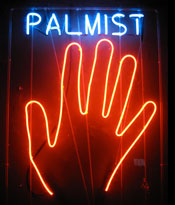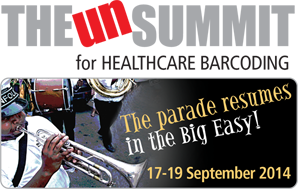I’ve been thinking about New Orleans, positive-patient identification, and whether or not I should have my palm read.
April 18, 2014 | In: I've Been Thinking
Stumbling onto “South Carolina’s Homepage,” The State, I read about some hospitals that are into reading palms, which prompted me to rush over to wikihow.com to brush up on the subject. The brief preamble of How to Read Palms says, “The objective is to evaluate a person’s character or future by studying the palm of their hand,” followed by nuts and bolts:
Step One: Choose a hand.
 There are two schools of thought: 1) Start with the left hand if a woman and the right hand if a man, and 2) start with the right hand if a woman and the left hand if a man. Guess they have to cover the bases.
There are two schools of thought: 1) Start with the left hand if a woman and the right hand if a man, and 2) start with the right hand if a woman and the left hand if a man. Guess they have to cover the bases.
Step Two: Identify the major lines.
- Heart line
- Head line
- Life line
- Fate line (which supposedly, only some people have)
Step Three: Interpret the heart line.
A dozen or so hand diagrams (all left) illustrate how the length of the heart line reveals traits like being selfish in love, having a heart that’s easily broken, etc. I quickly skipped to
Step Four: Read the head line.
Hand diagrams illustrate indicators for creativity, enthusiasm for life, consistency of thought, etc. When I came to the one about short attention span, I clicked over to ESPN.com to check out the Mariners score then NPR.com to check in on Putin’s Ukraine shenanigans before returning to the news story about the palm- reading hospitals.
Turns out that the South Carolina health system is not into magical arts rooted in astrology (like the plethora of seers by card tables in New Orleans’s Jackson Square—the palm-reading capital of the US) but rather biometrics rooted in sound science.
Patients being admitted to the Bon Secours St Francis Health System place their hands on harmless infrared beams that capture images of the unique veins in their palms, which are translated into code and linked to their medical records. On return visits, palm scans pull up each patient’s record, not someone else’s, simultaneously triggering the production of a bar-coded patient wristband, which caregivers scan to identify patients before administering medications, collecting specimens, or performing other treatments.
Positive-patient identification begins at admitting. None of us is interested in wearing anyone else’s wristband on our journeys through hospitals.
One St Francis spokesperson told the Greenville reporter that a few times each week patients are admitted who have the same names as others in their system. Think Jim Smith or Juanita Garcia. It doesn’t take a New Orleans palmist to see trouble in the future for patients who are misidentified upon registration.
Palm reading is strengthening the safety net under the health system’s patients. Say, for example, some guy who’s been enrolled with this biometric system has been rolled into the hospital’s ER alone and disoriented or unconscious. As long as blood’s flowing through his veins, scanning his palm will retrieve his medical record.
 Palm reading is also addressing fraud by catching patients attempting to use others’ identities to obtain medical services. More than a dozen times last year (before implementing palm scanning) one of the hospitals was fooled and charged other members’ insurance, which was not discovered until the defrauded parties got their bills. You can imagine the mess.
Palm reading is also addressing fraud by catching patients attempting to use others’ identities to obtain medical services. More than a dozen times last year (before implementing palm scanning) one of the hospitals was fooled and charged other members’ insurance, which was not discovered until the defrauded parties got their bills. You can imagine the mess.
Of course, palm scanning cannot predict a patient’s future, but it can protect her future. And while scanning can’t evaluate a person’s character, it can intercept characters who, lacking character, are willing to cheat the system and create sorrow for others.
Candidly, when I want to ponder the road ahead or examine my character (or lack thereof), I’ll take the ancient Hebrew psalmists over Big Easy palmists. However, when being admitted to a hospital, I’d be more than willing to have my palm read.
Speaking of the Big Easy, I hope you will join us as The unSUMMIT for Healthcare Barcoding[1] parade resumes September 17-19, 2014.
What do you think?
Mark Neuenschwander aka Noosh
[1] Formerly The unSUMMIT for Bedside Barcoding
